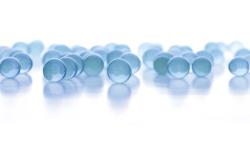
OR WAIT null SECS
- About Us
- Advertise
- Editorial Information
- Contact Us
- Do Not Sell My Personal Information
- Privacy Policy
- Terms and Conditions
© 2024 MJH Life Sciences™ and BioPharm International. All rights reserved.
Lonza Expands Cell Portfolio for In Vitro Testing
Lonza has added four liver cell types to its hepatocytes portfolio for testing of in vitro drug models.
Lonza announced on May 22, 2018 that it added hepatic stellate cells, Kupffer cells, and liver-derived endothelial cells to its hepatocytes portfolio for testing of in vitro drug models.
According to the company, these hepatic non-parenchymal cells provide scientists with the building blocks to create more physiologically relevant in vitro models, including co-cultures and 3D cell cultures, for enhanced liver disease research.
“Hepatic non-parenchymal cells are involved in normal liver function, including transport, metabolism, and growth; however, they also play important roles in the immune response,” the company stated in a press release. “Kupffer cells, for instance, are the resident macrophages of the liver and are one of the first lines of defense against bacteria and toxins in the gut. In addition, liver-derived endothelial cells form the primary cellular barrier that lines blood vessels and sinusoids in the liver. As well as their role in normal liver function, hepatic non-parenchymal cells can be involved in the formation of common liver diseases.”
Lonza also states that by creating more sophisticated in vitro culture models that incorporate both hepatocytes and non-parenchymal cells, scientists can improve the translatability of their toxicity testing and pharmacokinetics studies to clinical trials, thus aiding the development of new liver disease treatments.
“Researchers working in drug metabolism, hepatitis, NASH, and other liver diseases with complex involvement of different liver cell types are trending toward using more physiologically relevant cell models,” said Dr. Maureen Bunger, product manager for ADME-Tox Solutions at Lonza, in the press release. “Our high-quality hepatic non-parenchymal cells are isolated and enriched from human liver tissue. They are pre-characterized for a variety of different applications, such as post-thaw plating, morphology, and response to LPS stimulation, which saves researchers both time and money by reducing the need to evaluate cells for experiments.”
Source: Lonza
Related Content:



